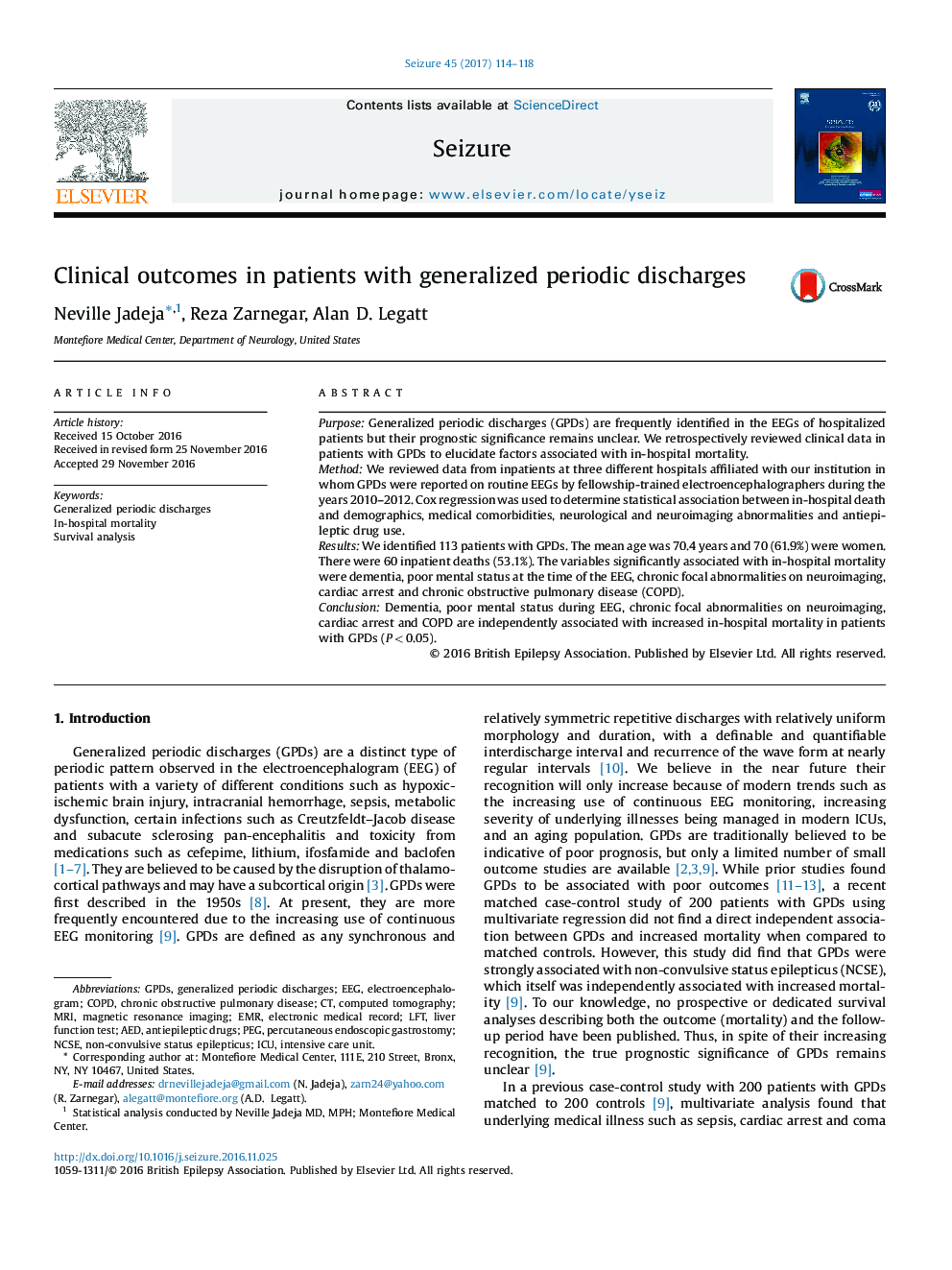| Article ID | Journal | Published Year | Pages | File Type |
|---|---|---|---|---|
| 4935470 | Seizure | 2017 | 5 Pages |
â¢Mortality in our patients with generalized periodic discharges (GPDs) on EEG was 53%.â¢Certain clinical features are associated with inpatient death in patients with GPDs.â¢Poor mental status is associated with inpatient death in patients with GPDs.â¢The association between various neuroimaging findings and mortality is described.â¢The vast majority of patients with GPDs who survive require long-term care.
PurposeGeneralized periodic discharges (GPDs) are frequently identified in the EEGs of hospitalized patients but their prognostic significance remains unclear. We retrospectively reviewed clinical data in patients with GPDs to elucidate factors associated with in-hospital mortality.MethodWe reviewed data from inpatients at three different hospitals affiliated with our institution in whom GPDs were reported on routine EEGs by fellowship-trained electroencephalographers during the years 2010-2012. Cox regression was used to determine statistical association between in-hospital death and demographics, medical comorbidities, neurological and neuroimaging abnormalities and antiepileptic drug use.ResultsWe identified 113 patients with GPDs. The mean age was 70.4 years and 70 (61.9%) were women. There were 60 inpatient deaths (53.1%). The variables significantly associated with in-hospital mortality were dementia, poor mental status at the time of the EEG, chronic focal abnormalities on neuroimaging, cardiac arrest and chronic obstructive pulmonary disease (COPD).ConclusionDementia, poor mental status during EEG, chronic focal abnormalities on neuroimaging, cardiac arrest and COPD are independently associated with increased in-hospital mortality in patients with GPDs (PÂ <Â 0.05).
